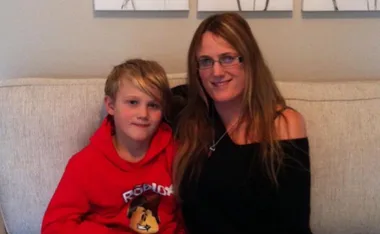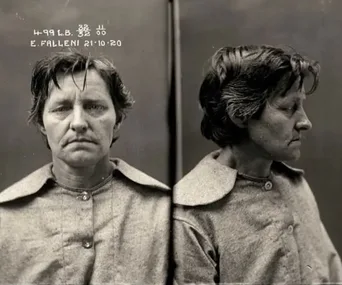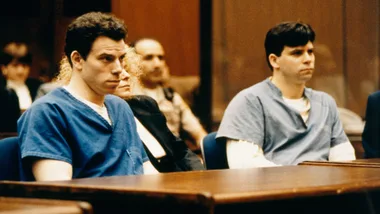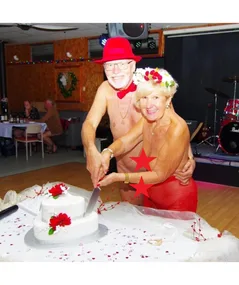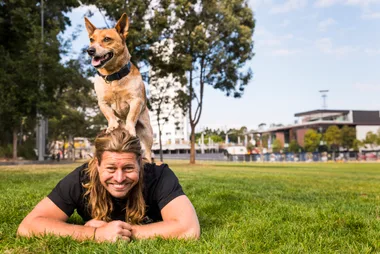There will never be another bloke like Steve Irwin.
He was out-of-the-box. A unique Australian who turned croc hunting and conservation into fame and fortune as a TV star — and “Crikey!” into a national catchcry.
In America, khaki-clad Steve was a super-hero. In Australia, he was a loveable larrikin who was able to gain the ear of everyone from the Prime Minister down.
Sometimes outspoken, sometimes controversial, Steve, 44, was dedicated to saving animals and making the best life possible for his wife, Terri, and children, Bindi, 8, and Bob, 2.
Until his accidental death on September 4, Steve Irwin seemed indestructible.
In one of his last interviews, the Queensland croc-hunter shared with The Weekly his extraordinary appetite for life and we republish the interview in full below.
In remembering this remarkable and proud Australian, we invite readers to recount their own stories and thoughts about Steve and to pass on their best wishes to his family via email at [email protected].
Ordinary families fight over the bathroom, or whose turn it is to take out the garbage. The Irwins squabble over snakes. Today, at Australia Zoo, Steve, wife Terri, and children Bindi and Bob, perched together on a pile of boulders, are fussing over who’ll hold which python for The Weekly’s photo shoot.
“Can I please have the yellow diamond?” wheedles Bindi, caressing its scales.
“As long as I get the black-headed one — hey, Bob-Bob, look at the snake on Mamma’s head!” yells Steve, dangling his reptile in the face of Terri who, unfazed at having her make-up smudged by its flicking tongue, laughs, “Bags the yellow-head!” Toddler Bob seems happy to take whatever’s going.
As the photographer snaps away, a tiger yawns, a crocodile blinks sleepily and Bindi’s elephant, Bimbo, plods by. They’ve seen it all before.
It’s just another day at Australia Zoo, the soon-to-be 890ha wildlife and fun preserve at Beerwah, 70km north of Brisbane, where, as Steve says, “any animal that won’t kill and eat ya” can be patted by the public. A sighting of the Irwins is as prized by customers as that of any croc, big cat, or even Harriet the Galapagos tortoise, the world’s oldest living creature, who died of a heart attack in June aged 176.
Bindi is buzzing. “I love being photographed, it’s cool,” she says, beaming. Just as well, because the eight-year-old is soon to star in her own 26-episode TV show for the Discovery Channel’s Animal Planet network, which broadcasts irrepressible, khaki-clad Steve’s Crocodile Hunter documentaries to more than 200 million subscribers in more than 100 countries.
In her programs, to air later this year, Bindi sings, dances, interviews celebrities and schmoozes with wildlife. “When people clap and cheer me, it makes me happy because I feel I’ve done something well,” she says. “When I grow up, I want to be doing exactly what I do now: sing, act and work with animals.”
Though he’s in agony from a shoulder strained by digging 500 postholes at the zoo, Steve, 44, hugs her proudly. “This little girl can put on a show and she’s fearless.” As she proved the time she was nipped on the lip by a carpet snake and neither cried nor held a grudge.
Bindi’s new series will feature a kitchen segment with Steve who, Terri reveals, does all the cooking at home (“We’d starve if he didn’t!”). They’ll rustle up Crikey Bananas on Sticks, Dreamy Creamy Apple Pie and Fair Dinkum Flapjacks. “Bindi is the person I really want to work with,” says Steve. “We have the best time.”
The series follows Bindi’s health and fitness DVD for children. “Too many kids spend all day eating fatty junk food in front of TV and video games,” she chides.
And if Bindi and Steve, whose wide-eyed wonder at the animal kingdom and fearless wrangling of crocs, sharks, lions, spiders and snakes in exotic locales has turned millions into wildlife lovers, can’t entice children to get fit, no one can. “Crikey!” says Steve. “I haven’t seen an animal I haven’t wanted to kiss!”
Yet earlier this morning, Steve faced what he insists was the most frightening incident of his life. Bob, whom they’re trying to ween off nappies, “dropped a huge poo in his duds — I panicked! Terri was out and I was absolutely bloody useless. Poo was everywhere, on his legs, on the carpet. Bindi’s screaming, ‘Dad! Bob-Bob stinks!’ Just then [manager, film director and best mate] Johnny Stainton phones and says, ‘The people from The Weekly are arriving, we have to get the snakes and elephants ready’. I yelled, ‘John, I can’t do a bloody thing. It’s a poo alert!’ Thank God, Terri arrived…”
“Amazing,” says Terri, laughing, “how mothers never need to mention events like this, only dads.”
“And now,” Steve explodes in mock outrage, blue eyes wide, “she’s pushing for another one. We have a boy and a girl — why would we want a third?” Then he smiles, leaving no doubt that another Irwin in the menagerie would be welcome indeed. “Mate, parenthood is like marriage. You work at it. At first, marriage is easy, it’s all about sex. Then you gotta learn to compromise.”
Animals can teach parents plenty. “Crocs like to tear chunks out of each other…so do kids,” he says. “When Bindi belts Bob, I say, ‘Bin, I realise you have to pick on your little brother, but take off your shoes before you kick him in the head.’ That way, she gets to whack him and he doesn’t get hurt. That’s a compromise. Everybody’s happy!”
And so they seem. “I treat my children and Terri as I expect them to treat me and as I treat animals,” says Steve, who still bristles at the worldwide furore in 2004 when a photograph showed him holding baby Bob near a crocodile. “The photo deceived,” he insists. “I was further away than it appeared. I’d never put my kids at risk. We’re a close family, big-time.”
Bindi, who is home-schooled, is so well-behaved, says Terri “that we expected our second child to be Satan. But Bob’s an angel, too. They’re wake-up-happy kids.”
“We’ve connected a big green cord from the ground to Bindi’s butt to keep her earthed!” Steve says with a guffaw. “She has celebrity parents, lives half the year in America and the other half in a zoo with 1000 animals. She travels to amazing places, is part of a multi-million-dollar conservation foundation. It’d be easy for her to develop an ‘I-don’t-need-to-work, I’ll-do-whatever-the-hell-I-want’ mindset, thinking that life’s only about fun. That just ain’t true. Bindi has to earn her own money. She has to earn respect.”
Bindi is truly her dad’s little beauty. At age one, she instinctively knew Steve was hurting badly when his mother, Lyn, died, and sat holding his hand for hours. At five, she sponsored a Filipino child through World Vision. And, says Steve, “In the zoo hospital, a baby koala is dying of kidney failure. On weekends, Bin spends six hours a day stroking it, feeding it, loving it as it passes from life to death. She throws herself into causes and never gives up. Bindi drives those vets mad…She’ll take in a dead bug and she’s like, ‘You have to bring it back to life!'”
“I tell them, ‘You gotta save it…Can’t you just try to save it?'” says Bindi, who also collects mice, ants, cockroaches and worms, and never steps on ant trails. “In the zoo, I saw a line of ants and I’m, like, to the customers, ‘Please do not walk on the ant trail!’ Like Dad, I’m not scared of anything: spiders — they’re cute. Rats — adorable. Snakes — I love ’em!”
Terri was similarly smitten when, in 1992, the American wildlife conservationist — specialty, bears and cougars — visited Bob and Lyn Irwin’s 10ha Queensland Reptile and Fauna Park at Beerwah and saw their boofy blond son staging a crocodile demonstration. “He was a cross between Tarzan and Indiana Jones,” says Terri, who’d scared off suitors back home in Oregon because she loved plucking maggots from injured raccoons. Steve recalls, “We were on each other’s wavelength right away. Mate, I was no stud. I was obsessed by wildlife and hopeless with women, but Terri was as passionate about animals as me and the spark was unbelievable.”
The couple honeymooned the same year in the mangrove swamps of Far North Queensland, where Steve, who’d trapped crocs that had strayed into populated areas with his father since age nine, filmed himself wrestling reptiles with an old video camera. TV director John Stainton saw the footage and shot some more. It was sold to the Discovery Channel in 1996 and the Crocodile Hunter’s entertainment juggernaut was spawned.
The Irwins have since poured their wealth into Australia Zoo, formerly Steve’s parents’ reptile park, their conservation projects and turning large tracts of land in Australia, the US, Vanuatu and Fiji into wildlife refuges.
“They reckon for every person there’s a perfect partner and Terri and I have found ours,” says Steve. Not that they’re Snugglepot and Cuddlepie.
She’s a procrastinator, a planner; he’s Mr Bull-At-A-Gate. “Steve’s a morning person and I’m a night owl. He yells, ‘Terri, come quick! Look at the sunrise!’ I go, ‘I’ve seen a sunrise. It’s a sunset in reverse’.”
She also suspects Steve of sabotaging her action figure in the shop at Australia Zoo. “Mine has a design fault — its shorts are detachable. Boys are always dakking me to see what’s underneath. You should see them scatter when I catch ’em at it.”
The Irwins, who live in a bungalow in the zoo grounds, are flat out. Besides Bindi’s show, Steve and John Stainton, who directs all Steve’s documentaries and helmed his hit movie Crocodile Hunter: Collision Course, are shooting an IMAX 3-D version of Crocodile Hunter.
“My ambition is to get people inside a crocodile’s jaws,” Steve yelps.
Soon, Steve will set sail with French conservationist Philippe Cousteau, grandson of the legendary oceanographer Jacques Cousteau, on his 23-metre research vessel Croc One to film the Pacific Ocean’s deadliest denizens. “There’ll be crocs, sharks and the world’s most venomous creature, the box jellyfish,” Steve says. “In 1986, I saw a guy wade into the water on Hinchinbrook Island [in Queensland]. He screamed, the most terrible sound. He’d been stung by a box jellyfish. He was dead in half an hour.”
The Steve Irwin Conservation Foundation will continue its research into crocodile behaviour. “They’re hard to study because if you go underwater with them they’ll kill you,” says Steve. “So we’re catching them and releasing them fitted with telemetry gear to learn how they live. Many croc-related fatalities could have been avoided if we’d had more knowledge.”
This year, Steve went to LA to capture Reggie, a home-raised alligator, which had been dumped in a lake when he outgrew his owner’s backyard. So far, no luck. “The water is freezing and polluted, so Reggie may have died, or maybe he’s dug a burrow and is waiting for his chance to surface. Wouldn’t that be great!”
In 2002, while shooting the movie Collision Course, he risked his life to drag his great friend, zoo managing director Wes Mannion, from the jaws of a crocodile. Wes received 150 stitches. “I’ve been an endangered species myself,” says Steve with a hoot. “I have been gored, clawed, jumped, bitten, savaged, jumped on, whacked, peed on, even groped.”
Usually, though, animals recognise a kindred spirit and leave him alone. “After a Japanese tourist was eaten by lions in Africa,” says Terri, “Steve walked among those lions, and they didn’t try to attack, just stood there mesmerised.”
Steve handles rattlers and when asked how he knows they won’t bite him replies, “I have a feeling I’ll be okay”.
“The Masai were amazed when I handled a red cobra that spits blinding venom in its prey’s eye,” says Steve. “I got squirted and had to wash it out with water — that turned out to be cow’s urine. I dunno what was worse, the poison or the piss!”
He first realised he had a “sixth sense” for wildlife when, aged four, he stepped on a two-metre brown snake that should have killed him but slunk away. “Dad couldn’t figure out why the snake didn’t strike and why I wasn’t scared. Then I’d be in the bush with him and just know there was a king brown in the vicinity…
Yet the tough guy gets teary when he speaks of his late mother, Lyn, and father Bob. To see Steve perform, you’d think sadness had never touched his life. Yet when his beloved mother died in a car crash in 2000, he was grief-stricken for two years. “I have never felt such pain,” he says quietly. “The day I lost her, I lost something huge. The veterinary clinic at the zoo is named after her. Dad has always been my action hero.”
Wildlife holds no terrors for the Irwins, but people do. “Bad guys with guns and bombs have made the world a worse place,” Steve says, shaking his head. “And people who advocate ‘sustainable use of wildlife’, when really they want to make a buck by turning animals into wallets, perfume and shark-fin soup.”
The family founded Wildlife Warriors, a non-profit organisation opposing crocodile farming and other “sustainable animal-management programs”.
“These Hitlers use the camouflage of science to make money out of animals,” says Steve. “So whenever they murder our animals and call it sustainable use, I’ll fight it. Since when has killing a wild animal, eating it or wearing it, ever saved a species?
“There are people who butt out their cigarettes in gorilla-paw ashtrays, with wastepaper baskets that were once elephant feet, who have ivory ornaments…who wear cheetah fur. Don’t buy these things! Then there’ll be no market and the animals won’t be killed.
“We have domesticated livestock raised for consumption and perfectly good fake leather and fur, so why must we kill wild animals to satisfy the macabre taste of some rich person?”
In Asia, Steve stormed out of a restaurant selling shark-fin soup. “‘Sorry, mate,’ I told the proprietor, ‘we’re leaving.’ He said, ‘But Mr Irwin, there’re other things to eat.’ I said, ‘You’re not hearin’ me. I cannot eat here. I will not eat here.’ They are raping the oceans and stuffing up the food chain by eliminating the No.1 predator.”
Nor will the Irwins holiday in Canada because, says Terri, “that’s where they whack the seals in the head”.
“Groups such as Wildlife Warriors, who educate the public about the beauty of even the scariest species and why cruelty to them is wrong, can make a difference,” says Steve. “In a short time, crocs have become cool, snakes are no longer seen as evil monsters. Loved ones of shark victims won’t allow the shark to be destroyed.”
The Irwins’ uncompromising stand and Steve’s gee-whiz enthusiasm has made them enemies, but a bloke who’s stared down a man-eating lion is not about to be spooked by criticism. “I’m here for the long haul,” says Steve, who believes his wired derring-do on TV makes him an accessible spokesman for conservation.
Steve has just signed a new three-year contract with the Australian government to be the face of the Australian Quarantine and Inspection Service, which prevents the importation of banned wildlife.
“We’re an island continent,” he explains with trademark passion. “We don’t have foot and mouth disease, we don’t have screw-worm, we don’t have rabies. Let’s keep it that way.”
Says Terri, “My husband has a unique ability to jump through the TV screen and into your lounge room. He grabs you and drags you into the wild so you share his wonder and excitement. People are going to faint when they see him in 3-D!”





.png?resize=380%2C285)
.jpg?resize=380%2C285)




